Different Types of Sewing Stitches
Generally speaking, different types of apparel require different types of sewing stitches in different locations. Even if you get the best fabric glue, that won’t cut it. If you’re committed to your crafts and serious about the art of sewing, then you should be versed in the knowledge of various stitch types, their application, and properties.
And that’s exactly what this article is all about. So, without further ado, let’s jump right in.
What is Stitch?
When loops of one or more threads bounds with each other, either by interlooping ,intralooping or interlacing, or combination of those to sew fabrics, the small unit of repeated configuration is identified as a stitch.
Stitches are based upon these:
Interlacing
If a thread passes over or around another thread or loop of a different thread it is called interlacing.
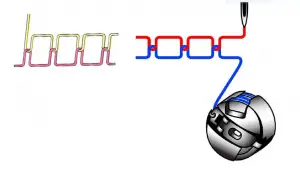
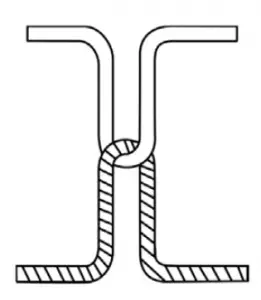
Intralooping
If a thread is passed through another loop of thread that is formed by the same thread it is called intralooping.
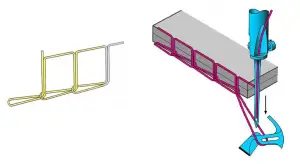
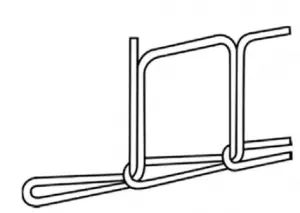
Interlooping
If a loop of thread is passed through another loop of thread formed by a different thread is called interloping.
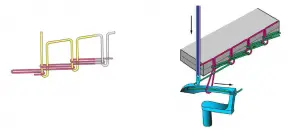

Different Types of Sewing Stitches by Their Class
Stich classes are divides into six types. The International Organization for Standardization uses the identical numbering (4915:1991: Textile Stitch Types Classification and Terminology) for categorizing stitches. In total, there are 88 types of stitches.
Stitch Class 100 | Single Thread Chain Stitch No. of Subdivided Classes = 7 Types = 101, 102, 103, 104, 105, 107, 108 |
Stitch Class 200 | Hand Stitch No. of Subdivided Classes = 13 Types = 201, 202, 204, 205, 206, 209, 211, 213, 214,215, 217, 219, 220 |
Stitch Class 300 | Lockstitch No. of Subdivided Classes = 27 Types = 301, 302, 303, 304, 305, 306, 307, 308, 309,310, 311, 312, 313, 314, 315, 316, 317, 318,319, 320, 321, 322, 323, 324, 325, 326, 327 |
Stitch Class 400 | Multi-Thread Chain Stitch No. of Subdivided Classes = 17 Types = 401, 402, 403, 404, 405, 406, 407, 408, 409,410, 411, 412, 413, 414, 415, 416, 417 |
Stitch Class 500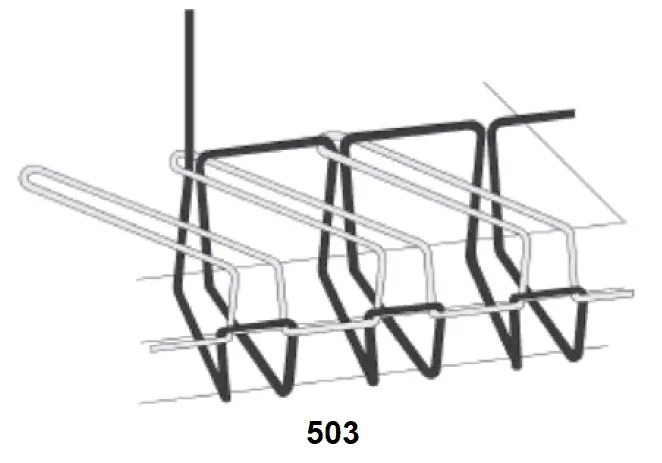 | Overlock/ Over Edge/ Safety Stitch No. of Subdivided Classes = 15 Types = 501, 502, 503, 504, 505, 506, 507, 506, 509,510, 511, 512, 513, 514, 521 |
Stitch Class 600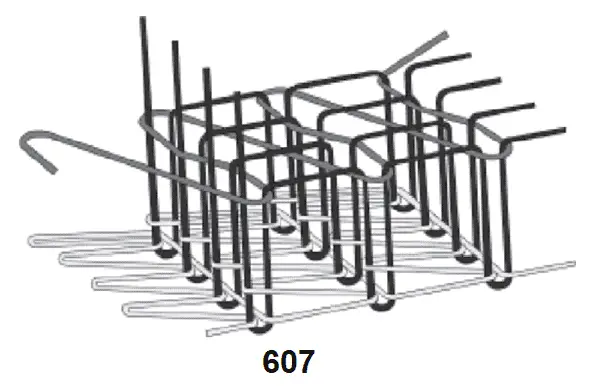 | Cover Stitch or Flat Lock Stitch No. of Subdivided Classes = 9 Types = 601, 602, 603, 604, 605, 606, 607, 608, 609 |
1. Stitch Class 100 – Single Thread Chain Stitch


Area of Application
- Lap & flap positioning
- Temporary joining
- Basting
- Hemming
- Blind stitching
- Buttonholing, Button attaching purpose
- Hemming
Stitches that are formed by a single thread via intra-looping techniques are identified as stitch class 100. These are applied by the chain stitch machine. And these stitches show elasticity. Thus, you’ll find this useful while working with the top sewing machine for jersey fabric.
There is one disadvantage which is that the security of the stitch is very poor; if one end of the thread is pulled, then the whole sewing will be opened.
2. Stitch Class 200 – Hand Stitch


Area of Application
- Lapel of jacket
- Coat and expensive clothes
Stitch which are basically formed by the method of domestic hand stitches are identified as class 200. It’s formed by passing the needle thread from one side to another. And it’s made by pick stitch machine (with a special type of needle & sewing m/c). Top and bottom view are exactly the same.
The main disadvantages are: time-consuming stitches, incur a higher cost, and speed of sewing is very slow.
3. Stitch Class 300 – Lockstitch


Area of Application
- Joining of facing
- Collar
Stitches which are formed by two or more threads via interlacement with each other and make bond are identified as class 300. Here, the thread which is in the top is called needle thread, and the thread which is in the bottom is called looper/bobbin thread. The top and bottom views are exactly the same. These are formed by a lockstitch machine. Stitches in this class are more secured with higher strength and extensibility.
There is a disadvantage; due to the lower capacity off bobbin thread, it needs frequent bobbin change which causes poor doffing time compared to others.
4. Stitch Class 400 – Multi-Thread Chain Stitch

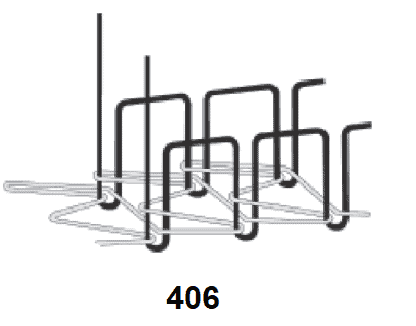
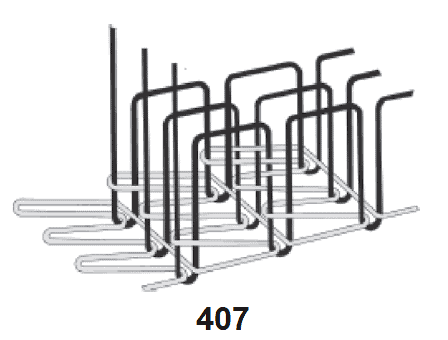
Area of Application
- Joining lace
- Braid
- Elastic with garments
- Side seam of pants and trousers
- Sewing heavy fabrics
Stitches which are formed with two or more set of threads and needle thread & looper thread are interlaced and interloped with each other like a chain are identified as class 400. One loop of needle thread is bound with two loops of the looper thread. The top view looks like a lock stitch and the bottom view looks like a double chain stitch.
A disadvantage is occurred due to lower resistance to runback, and it increases bulk(load) under the seam. This stitch type is often used in a sewing machine for sewing leather.
5. Stitch Class 500 – Overlock/Over Edge/Safety Stitch

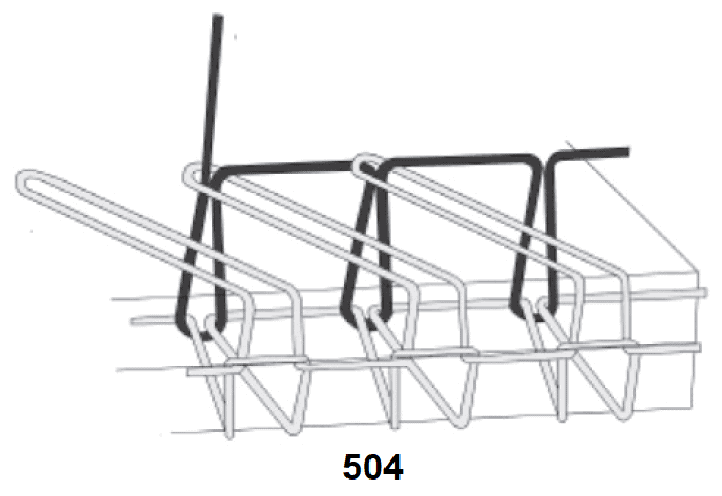
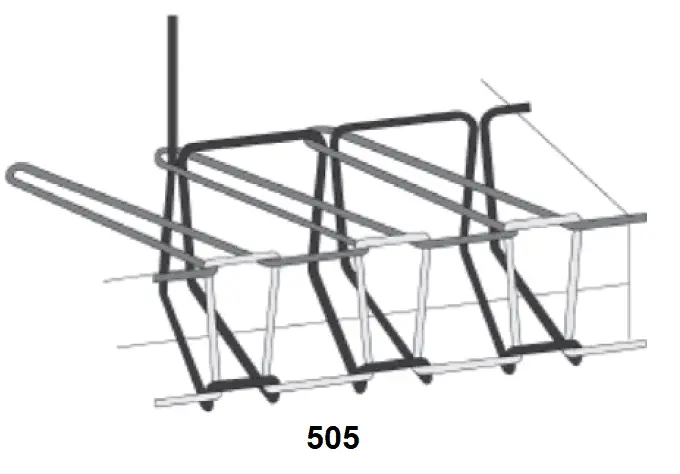

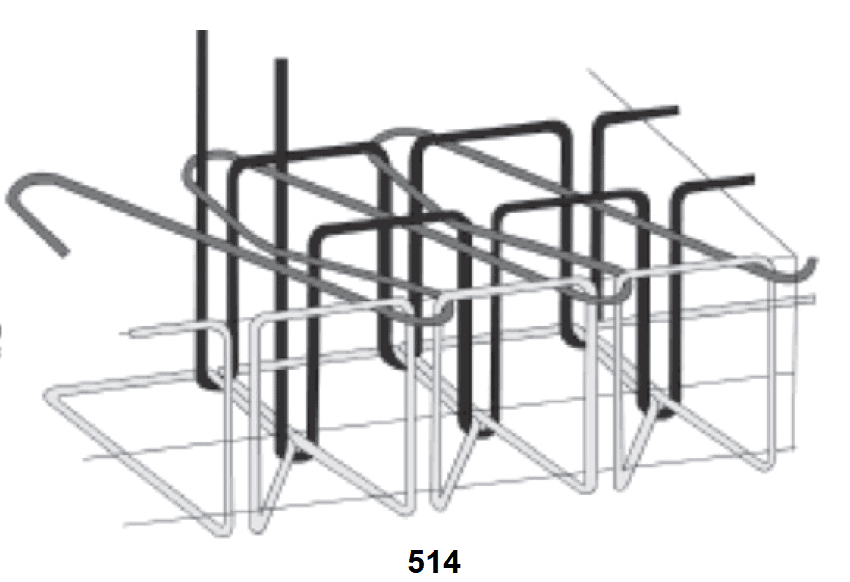
Area of Application
- Joining of sidearm
- Armhole of shirts, for knitted fabrics
- Inseam and outseam of pant and decorative purposes
- Widely used in sportswear too
Stitches that are formed with one or more sets of thread & bound by minimum loops of one set of thread by rotating the fabric edge is identified as class 500. Before forming this type of stitches fabric edge is cleaned by a knife, which is mounted at the front of the needle. These types of stitches have higher extensibility and elasticity.
These stitches are secured and can’t be unraveled easily. It prevents the fabrics from unraveling. This stitch is also known as over edge stitches.
The disadvantage is that this type of stitches makes the seam construction bulky.
6. Stitch Class 600 – Cover Stitch or Flat Lock Stitch
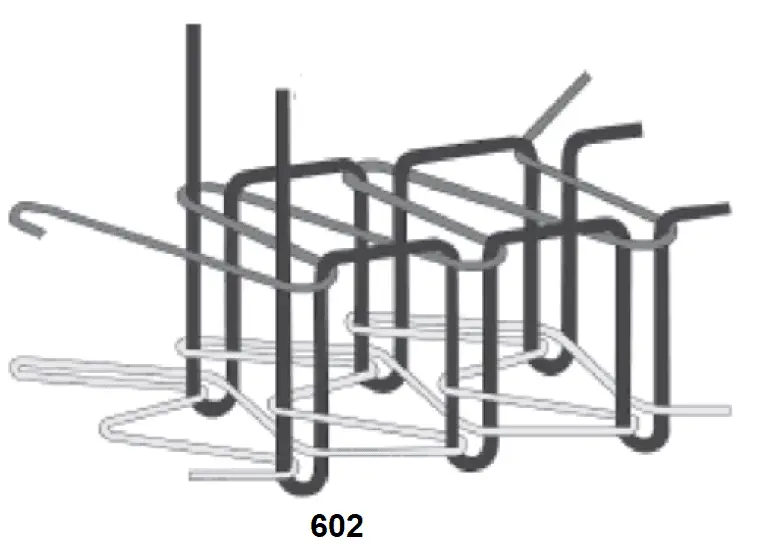
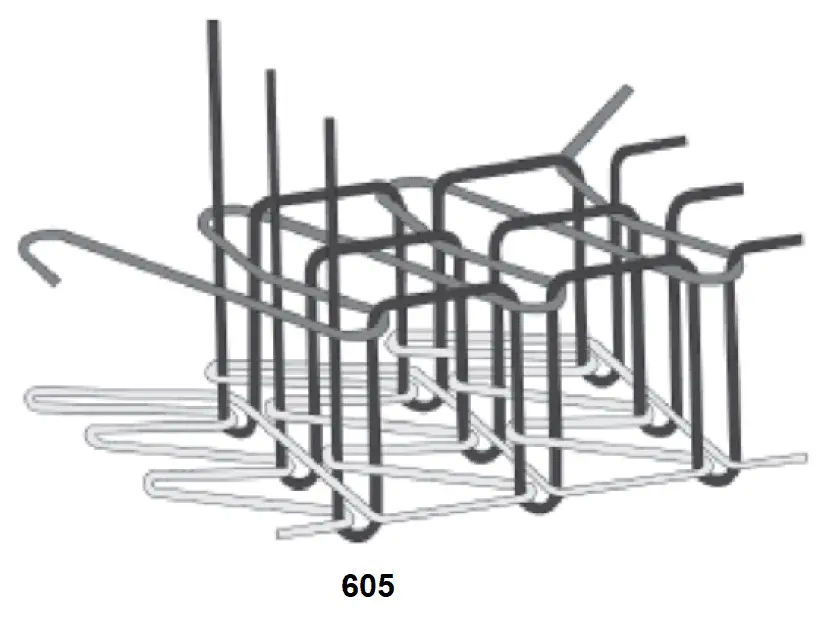
Area of Application
- Knitted fabric edges
- Attaching laces, elastic
- Decorative purposes
These stitches are generally formed with 3 strands of threads. One thread is used for needle thread, other for looper thread and another is used for top cover thread. These are the most complex stitch type.
Different Types of Stitches Used in Different Garments
Types of Sewing Stitches in a Basic Shirt
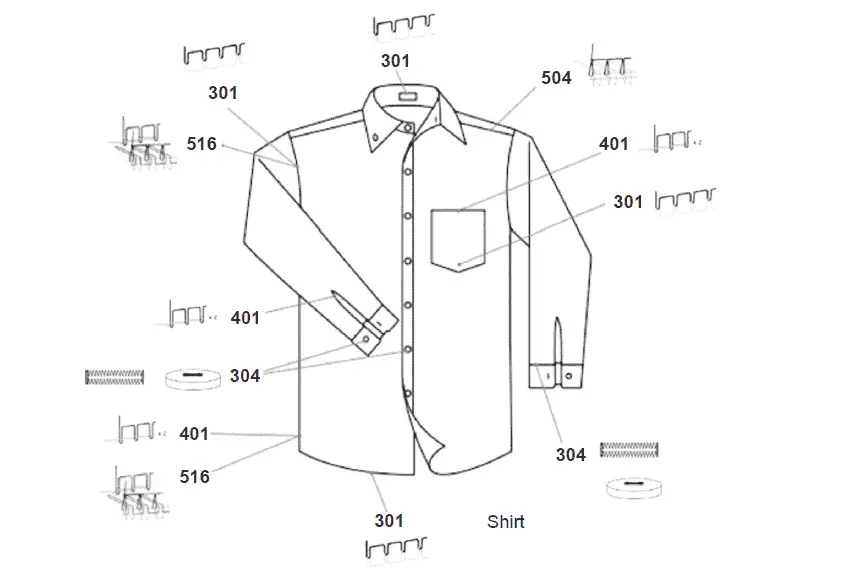
Types of Sewing Stitches in Basic Pants
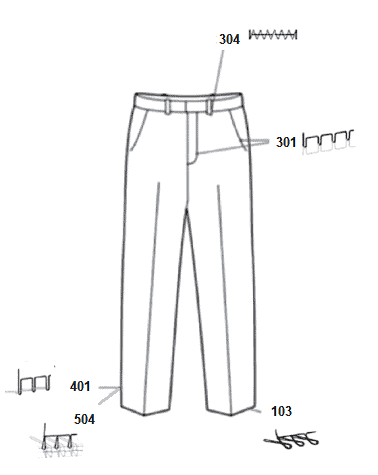
Types of Sewing Stitches in a Dress
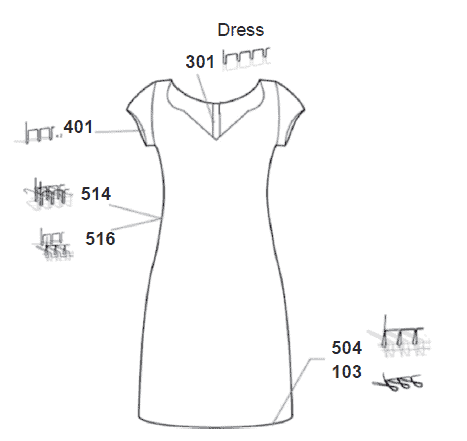
Types of Sewing Stitches in Undergarments
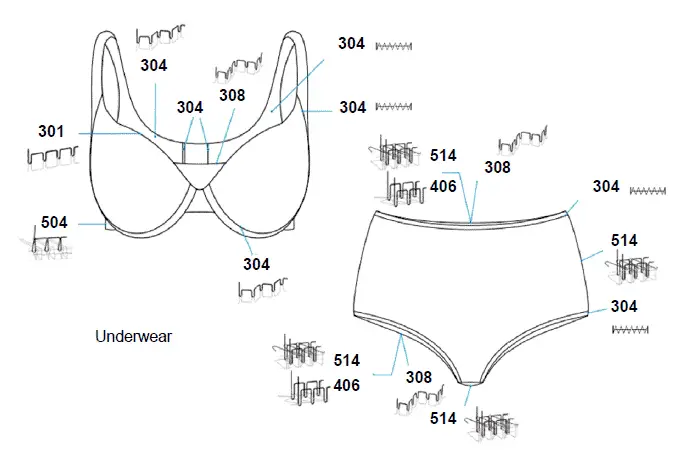
Frequently Asked Question
What kind of stitches are used in shirt?
301, 304, 401, 516 are mandatory to sew a shirt, but due to buyer requirement, it can change.
Is a zigzag stitch stronger then straight stitch?
Yes, zigzaz stitches are stronger and more flexible.
What is the code for double or more stitches?
After writing any stitch class we can add number of stitches by connecting a dash sign (-) with class and write the number of stitches, .i.e, 301-2 means there are two 301 stitches in parallel.
What type of sewing stitch is required for making wigs?
The combination of plain stitch and zig-zag stitch will be needed for making wigs. You can do those by hand or use the best sewing machine for wigs.
What Type of Sewing Stitches Can Be Used for Knitting a Large Blanket?
When it comes to choosing knitting needles for big blanket, it’s important to consider the type of sewing stitches you’ll be using. For a large blanket, you might opt for a simple garter stitch or a cozy seed stitch. Alternatively, a classic stockinette stitch can create a smooth, uniform fabric.
Bottom Line
I hope, after reading this article, you’ll be able to select exactly the type of sewing stitch needed for your craft without any hiccups. Remember, only the best sewing machine for thick fabrics can give you your desired output. And if it seems complicated, then you can definitely try the no sew alternatives for joining the fabrics.
REFERENCES
